Mealtime should be as enjoyable as possible, especially for those clients requiring assistance. As with any other aspect of providing personal care, nursing assistants should use empathy. Think about what it would feel like if you had cognitive or sensory deficits and could not ask for what you want to eat even though it is on the plate in front of you. Recognize how the presentation of the food and the table influence one’s appetite. Consider with whom you like to share your meal. All these factors should be considered when feeding a resident.
Avoid using feeding techniques that are used with young children, such as making noises, moving utensils like airplanes, etc. Residents should be offered a clothing protector to avoid soiling their clothes or gown, but to maintain their dignity, these protectors should never be referred to as a “bib.”
When the meal is ready to consume, describe to the resident what they have on their tray to eat and drink. If the client is visually impaired, use the clock method to describe their plate so they know where each food is located. For example, the nursing assistant can state, “Your mashed potatoes are at 10 o’clock, the green beans are at 2 o’clock, and the meat loaf is at 6 o’clock on your plate.” If a resident has an order for a pureed diet (i.e., all food is blended to smooth consistency), know what each food is and name it when assisting the resident.
Nutritional requirements for each resident are determined by the dietary staff. Each resident has a specific type of diet ordered, including texture and consistency of liquids. It is imperative for nursing assistants to check the resident’s care plan to know what type of diet is currently ordered and be familiar with the appearance of these types of diets. These steps ensure the correct foods and fluids are provided to residents and reduces the risk of choking and aspiration. Aspiration refers to inadvertently breathing fluid or food into the airway instead of swallowing it. Diets are further discussed in Chapter 6. See the “Preparing Clients for Meals and Assisting With Feeding” checklist for specific steps when assisting clients with feeding.
Things to observe for and report during feeding include the following:
- Coughing or frequent clearing of the throat while eating. This may be a sign of aspiration.
- A wet voice, meaning vocalization with sounds as if food or fluids remain in the mouth or throat.
- Difficulty swallowing.
- Pain with chewing or swallowing.
- Broken or cracked teeth or dentures that don’t fit properly.
- Changes in appetite.
Thinking back to Maslow’s Hierarchy, physiological needs such as food and fluids are the basis of a healthy existence. Digestive, circulatory, and urinary system changes related to aging will be discussed further in Chapter 11, but aging can pose several risk factors to nutritional and fluid intake. Poor dentition can cause changes in food choices. Someone with missing, cracked, or painful teeth, ill-fitting dentures, or other oral concerns may choose softer foods. A declining sense of smell, taste, or vision can decrease appetite. Pain with movement or other factors that limit mobility may make elimination difficult, which may be a factor in decreasing intake, so toileting needs are less frequent. These are just a few of the aging issues that can lead to malnutrition, dehydration, or both in aging clients and those unable to care for themselves.
Feeding Aids
There are several assistive devices that allow residents to more easily feed themselves.
Built-up handles allow the use of utensils by individuals with limited functional ability of their fingers to hold a smaller handle (such as for someone with severe arthritis). Silverware with prebuilt handles can be purchased, or a foam tube can be placed around regular silverware and removed for washing.
Weighted silverware has a weighted handle for individuals with tremors or unsteady hands. The weight slows down the shaking and allows food to remain on the utensil. See Figure 5.7[1] for an image of built-up handles and weighted silverware.
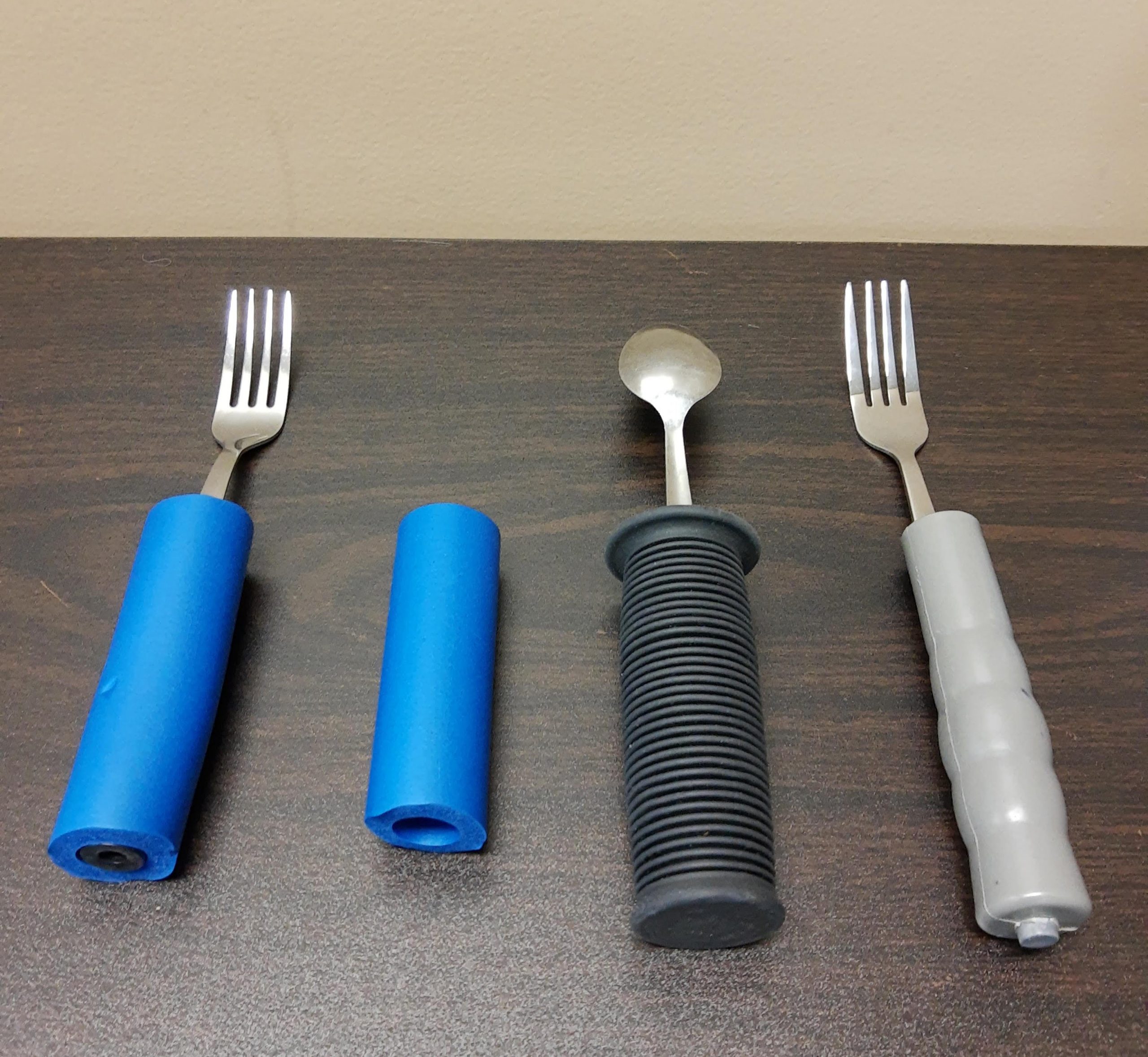
Swivel spoons rotate so if the resident’s hand shakes, the spoon doesn’t move, and the food remains on the utensil. See an image of a swivel spoon in Figure 5.8.[2]
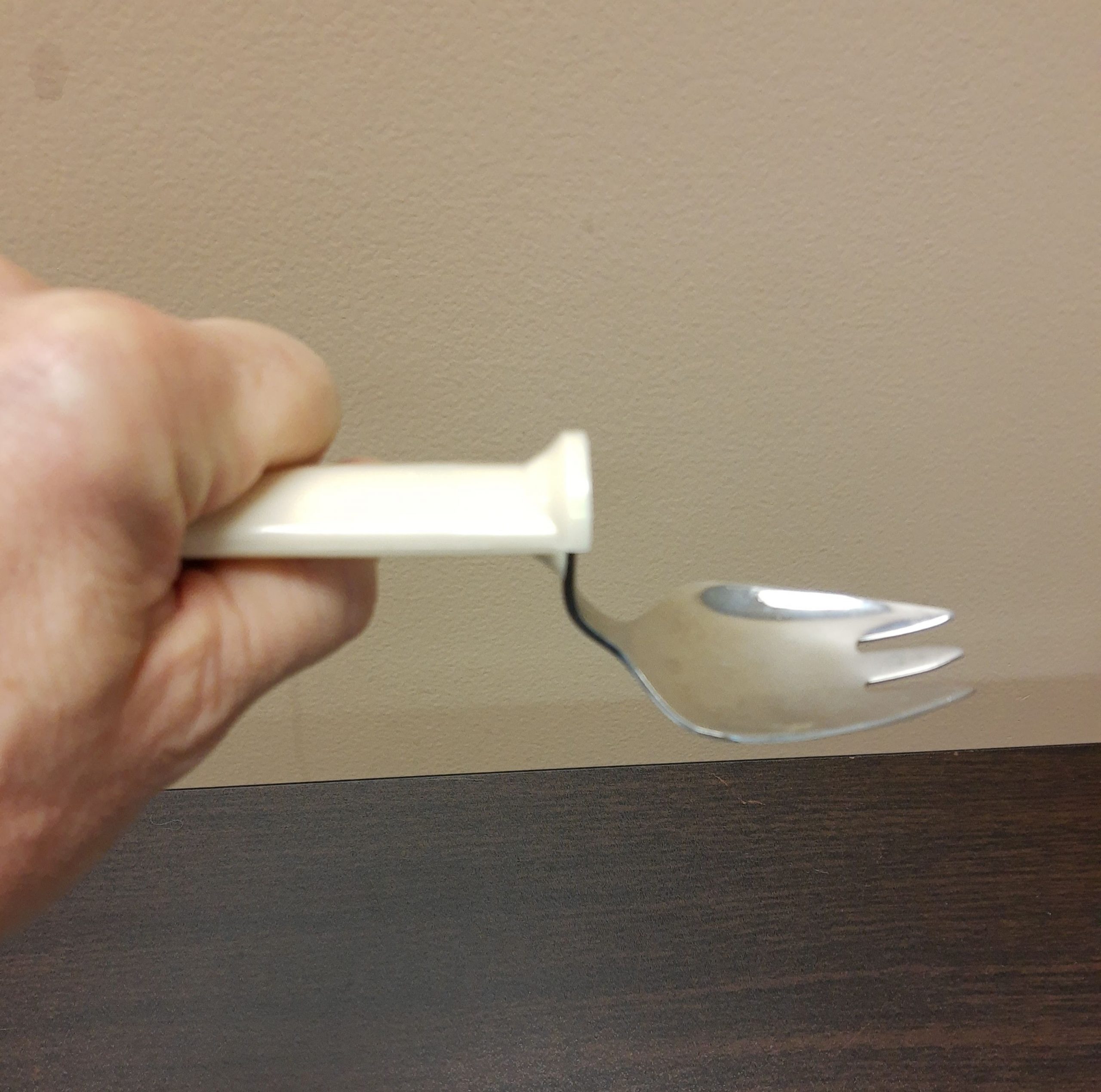
Covered cups prevent liquids from spilling due to tremors and also slow down the rate of fluid leaving the cup. For example, individuals with aspiration risk (as discussed in Chapter 6.2, “Nutrition and Fluid Needs”) may be permitted to drink regular liquids out of a covered cup rather than requiring thickened liquids. See an image of a covered cup in Figure 5.9.[3]
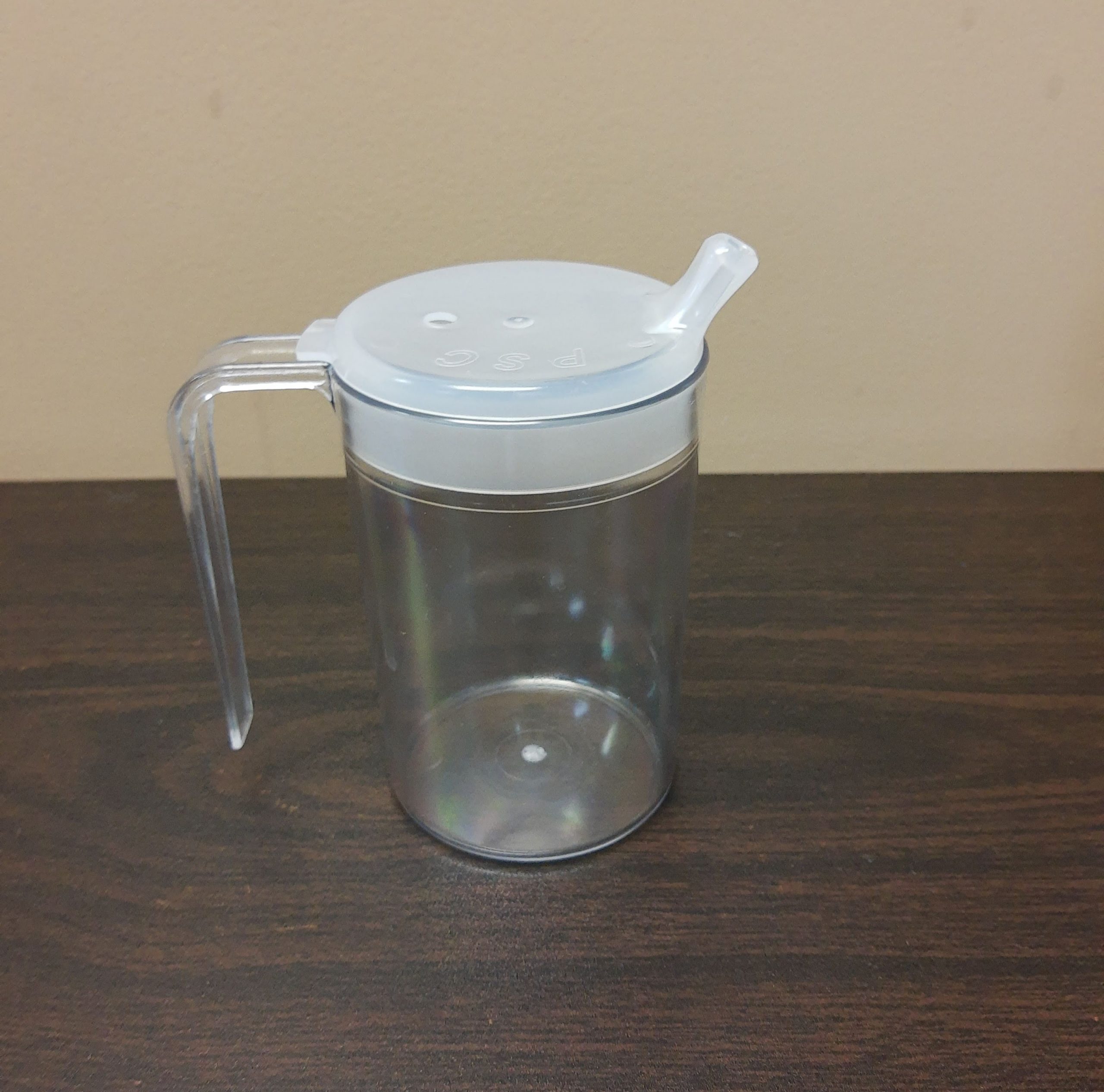
Nosey cups are used for clients with limited neck mobility. The nosey cup allows them to drink all of the fluid in the cup without tipping their head back. The cut-out portion of the cup fits around the person’s nose so it can be tilted up to finish the fluid. See an image of a nosey cup in Figure 5.10.[4]
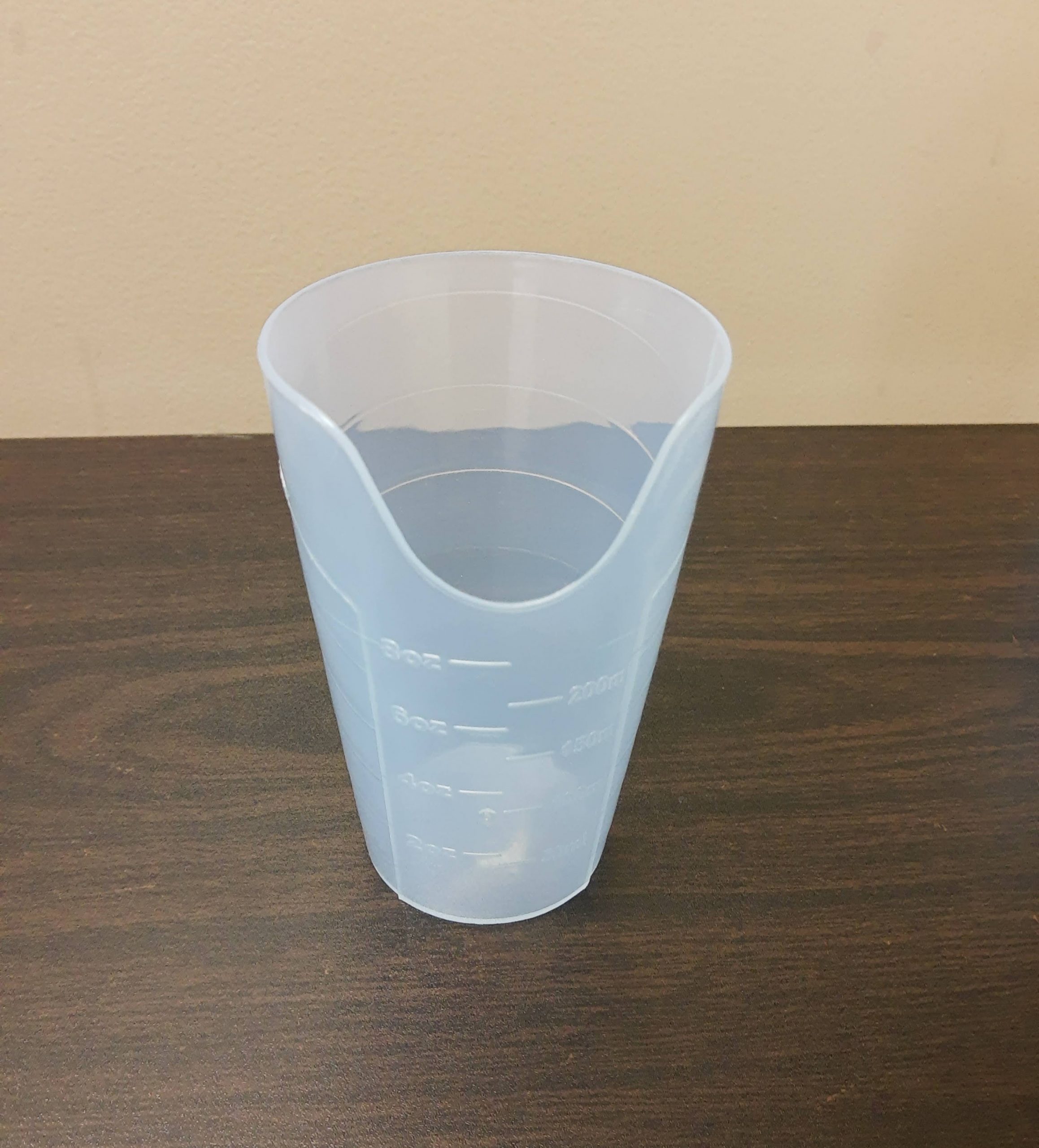
Plate guards are used for individuals who can use only one hand or who have difficulty maneuvering utensils. Food can be pushed onto the utensil by pushing it against the plate guard. The plate guard can be placed on any plate (such as the image of the plate in Figure 5.11[5]), or it may be on a special plate made with the guard built on the plate surface (as in Figure 5.12[6]).
![“Plate-Guard-scaled.jpg by Myra Reuter for Chippewa Valley Technical College is licensed under CC BY 4.0[/footnote] Photo showing a plate guard in place on a plate](https://lbcc.pressbooks.pub/app/uploads/sites/8/2023/05/Plate-Guard-scaled-1.jpg)
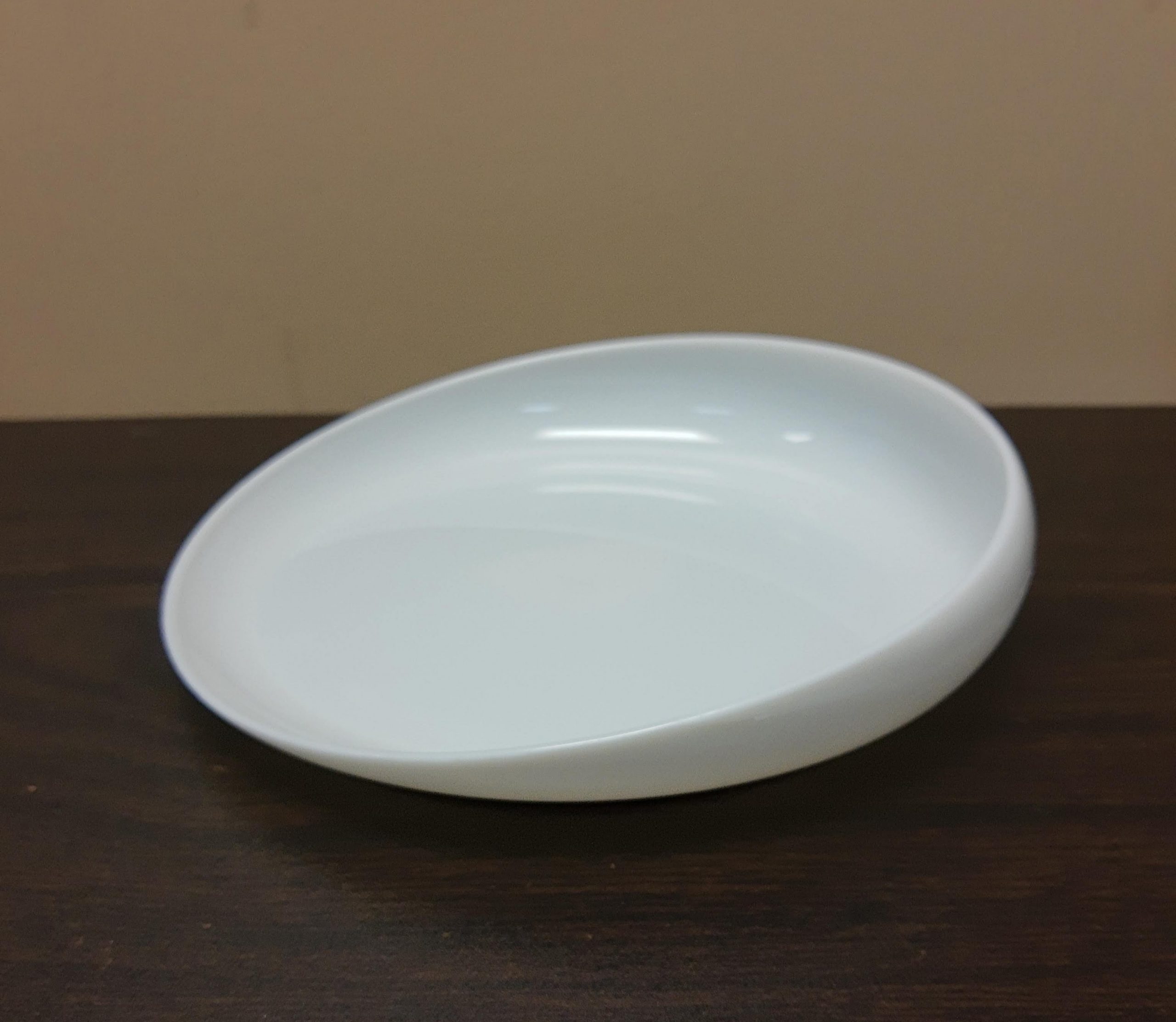
Documentation of Food and Fluids
Documentation of food and fluids gives insight to the overall health and well-being of clients. It gives nurses, dieticians, health care providers, and other staff insight into possible health concerns. Documenting intake is an important responsibility of nurse aides. Unless otherwise indicated, food intake is documented by estimating to the nearest 25% of intake. It is also appropriate to note that a resident only ate “bites of food.” See Figures 5.13 – 5.16[7] for examples of food intake.
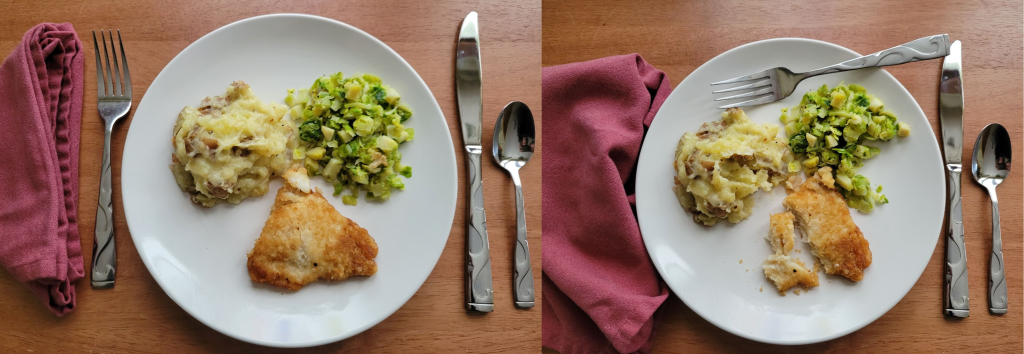



Any fluids documented in health care are converted to milliliters (mL) or cubic centimeters (cc). Milliliters and cubic centimeters are the same units, so 1 mL = 1 cc. Typically, fluids are measured in ounces in the United States, so a conversion is necessary. To do so, multiple the number of ounces by 30, as 1 ounce = 30 cc = 30 mL. Examples of fluid conversions are provided in Table 5.7.
Table 5.7 Conversions of Ounces to Milliliters (mL) or Cubic Centimeters (cc)
| Fluid Ounces | Conversion | Milliliters or Cubic Centimeters |
|---|---|---|
| 6 oz | x 30 | 180 mL or cc |
| 4 oz | x 30 | 120 mL or cc |
| 1 cup = 8 oz | x 30 | 240 mL or cc |
In addition to beverages, anything that melts at room or body temperature is documented as fluids. This includes food items such as clear broth, ice chips, ice cream, popsicles, and Jell-O. However, soup is documented as part of the client’s food intake.
- “Built-Up-Silverware-scaled.jpg” by Myra Reuter for Chippewa Valley Technical College is licensed under CC BY 4.0 ↵
- “Swivel-Spoon-scaled.jpg” by Myra Reuter for Chippewa Valley Technical College is licensed under CC BY 4.0 ↵
- “Kennedy-Cup-scaled.jpg” by Myra Reuter for Chippewa Valley Technical College is licensed under CC BY 4.0 ↵
- “Nosey-Cup-scaled.jpg” by Myra Reuter for Chippewa Valley Technical College is licensed under CC BY 4.0 ↵
- “Plate-Guard-scaled.jpg” by Myra Reuter for Chippewa Valley Technical College is licensed under CC BY 4.0 ↵
- “Built-Up-Plate-scaled.jpg” by Myra Reuter for Chippewa Valley Technical College is licensed under CC BY 4.0 ↵
- “25 percent intake.png,” “50 percent intake.png,” “75 percent intake.png,” and “100 percent intake.png” by Nic Ashman for Chippewa Valley Technical College are licensed under CC BY 4.0 ↵
A method used with clients with visual impairments to describe where the food on their plate is located.
A diet order indicating all food is blended to smooth consistency.
Inadvertently breathing fluid or food into the airway instead of swallowing it.
Vocalization with sounds as if food or fluids remain in the mouth or throat.
Specialized silverware that allows the use of utensils by individuals with limited functional ability of their fingers (such as severe arthritis) to hold a smaller handle.
Specialized silverware with a weighted handle for individuals with tremors or unsteady hands.
Spoons that rotate so if the resident’s hand shakes, the spoon doesn’t move, and the food remains on the utensil.
Cups that prevent liquids from spilling due to tremors and also slow down the rate of fluid leaving the cup.
Cups used for individuals with limited mobility of the neck and allows individuals to drink all of the fluid in the cup without tipping their head back.
Special plate with a built up guard/side which is used for individuals who can only use one hand or who have difficulty maneuvering utensils.
